There are more than 40 species of venomous snakes in China, which are widely distributed, mostly in the provinces south of the Yangtze River. Snake venom can be divided into three categories according to its properties: nerve poison, blood circulation poison, and mixed poison. The most venomous snakes include king cobra, bungara, red-tailed bamboo leaf green snake, Zhoushan cobra, sharp-nosed adder, golden krait, round-spotted viper, original spearhead adder, Mangshan ironhead, short-tailed adder, etc. Today we bring you a list of the top ten venomous snakes in China, let us find out together.
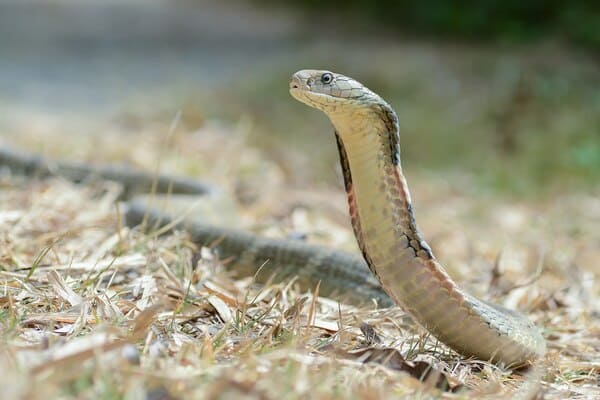
1. King Cobra
King cobras are distributed in China's Zhejiang, Fujian, Jiangxi, Hainan, Guangxi, Sichuan, Guizhou, Yunnan, Tibet, Guangdong and Southeast and South Asia. Compared with other cobras, it has a more ferocious temperament, extremely quick reactions, flexible head and neck rotation, and a large amount of detoxification. It is one of the most dangerous snakes in the world. Its main food is its similar species - other snakes, so it is difficult to see other types of snakes in the King Cobra's territory. Generally, king cobras often do not let go easily after biting something. The dry poison in the venom is about 100 mg, and the average lethal dose is 12 mg. The bitten person will suffer from swelling, nausea, abdominal pain, respiratory paralysis, and symptoms within a few minutes. Speech disorder, coma and other symptoms, if a person does not receive timely medical treatment within half an hour after being bitten, he will definitely die.
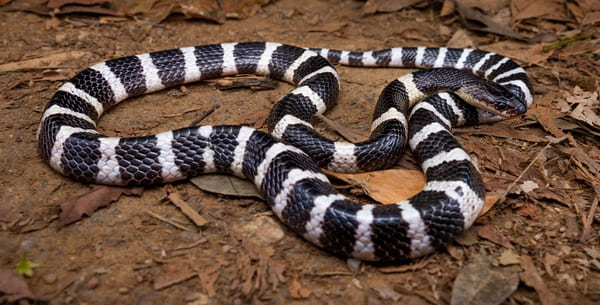
2. Bungarus snake
In the ranking of venomous snakes in China, the bungara snake has long been ranked among the top three, and it is also among the top in the global ranking of venomous snakes. The bungara snake is the fourth most venomous snake on land and is mainly distributed in areas south of the Yangtze River. They usually lurk during the day and are active at night, especially on humid and muggy nights. However, in early summer when the temperature is 15-20℃ and the weather is sunny, they will also be active during the day to bask in the sun.
Bungarus snakes have a relatively mild temperament and rarely attack humans. However, when they lay eggs and hatch or are disturbed, they will suddenly attack and bite humans. Although the venom glands of the bungara snake are relatively small, they are extremely venomous and are the most toxic among the krait genus. Patients bitten by a bungara snake may not feel pain, but may feel drowsy and want to fall asleep. If not treated in time, they may die in their sleep.
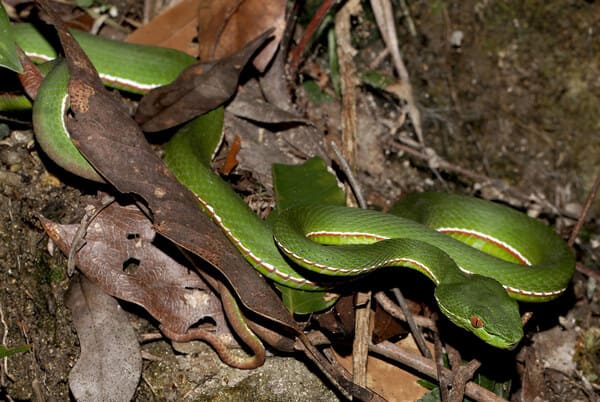
3. Red tail bamboo leaves with green leaves
Red-tailed bamboo leaf green, also known as white-lipped bamboo leaf green, is one of the most praised venomous snakes, and in the editor's opinion, it is also one of the most beautiful venomous snakes. They are mainly distributed in southern China and Southeast Asia. They usually feed on rats, lizards, frogs and tadpoles. They have a strong appetite and a large food intake. After catching prey, they usually kill it first and then swallow it. Their mouths can be opened according to the size of the food. Variety.
Although the red-tailed bamboo leaf green is small, it has a certain degree of aggression. According to clinical observations, the Bamboo Leaf Green Snake is a blood-circulating poison. After being bitten, severe burning pain will occur in the local wound. If the wound is not treated properly, serious consequences will occur, including severe pain, edema, and gradually the appearance of purple spots under the skin, which may eventually lead to heart failure and death.
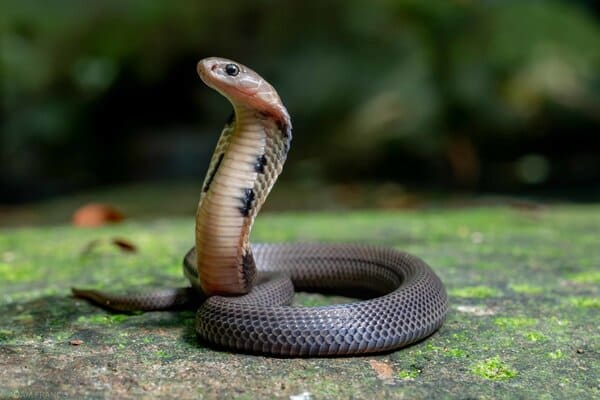
4. Zhoushan Cobra
The Chinese cobra, also known as the Zhoushan cobra, ranks fifth among the venomous snakes in the country and is the main species distributed in the low-to-mid-altitude areas of southern China, Taiwan, and Indochina. It is a large front-toothed venomous snake. When disturbed, it will often erect the front half of its body, flatten its neck and expand it, adopting an attacking posture. At the same time, the back of its neck shows double-ringed "glasses"-shaped markings.
They usually feed on frogs and snakes, followed by birds and mice. They also prey on lizards, loaches, eels and other small fish. Its venom contains a mixture of neurological and blood circulation poisons, which can paralyze respiratory muscles and cause external bleeding. If the bite is not treated in time, it will be life-threatening. In addition, the Chinese cobra has the habit of actively attacking.

5. Sharp-nosed adder
The sharp-nosed pit viper, also known as the hundred-step snake, five-step snake, seven-step snake, adder snake, valley pit viper, flower snake, Chinese pit viper, etc., is a very famous snake in Asia, especially in Taiwan and South China has always received much attention. Its distribution range is roughly east of 104° east longitude in China and between 25° and 31° north latitude. Known distribution areas include Anhui (south), Chongqing, Jiangxi, Zhejiang, Fujian (north), Hunan, Hubei, Guangxi (north), Guizhou, Guangdong (north) and Taiwan Province. In China, it is widely distributed, especially in the Wuyi Mountains and Wannan Mountains. Outside of China, it is only found in northern Vietnam. The adder is a highly venomous snake. It is said that after being bitten by this snake, you will faint within five steps, so it is also called "five-step fall".
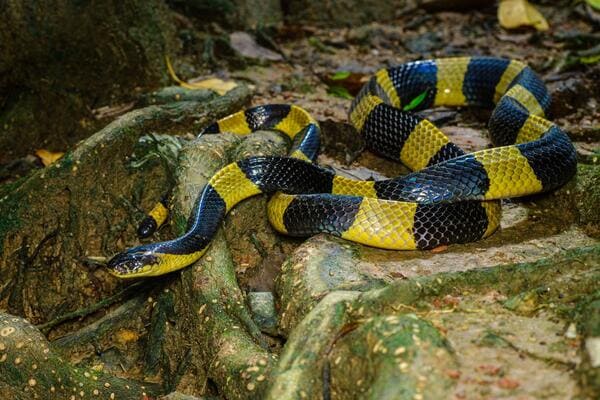
6. Krait
The krait is mainly distributed in Guangxi, Guangdong, Hainan, Fujian, Jiangxi, Yunnan and Hubei in China. It is a snake with front groove teeth and carries highly venom. Together with the cobra and the gray rat snake, it is known as the "Three Snakes" and is a famous edible snake species. Although the venom of the krait is weaker than that of its close relative, the bungara snake, it is still a highly venomous snake, and its number is relatively more abundant than that of the bungara snake, so it cannot be ignored after being bitten. The incubation period of symptoms after being bitten is relatively long, and patients may have difficulty breathing. In severe cases, they may eventually die from respiratory paralysis and circulatory failure. However, similar to other krait snakes, the krait is slow-moving and less aggressive towards humans, feeding mainly on small vertebrates.

7. Round-spotted viper
The round-spotted viper ranks at the top of the ranking of venomous snakes in China and is mainly distributed in Fujian, Taiwan, Guangdong and Guangxi. The round-spotted viper moves slowly. When attacking a target, the front part of the trunk will first bend backward, then suddenly leave the ground and shoot forward and bite the target, and sometimes it will bite and hold on. Young round-spotted vipers are more ferocious. When disturbed, they will continue to expand and contract and make a "whooshing" sound. This state may last from several minutes to half an hour. The snake venom contains two toxins, one is hemorrhagic toxin and the other is neurotoxin, which is extremely toxic. Generally, being bitten may cause kidney damage, so it is often called a "kidney-deficient snake".

8. Original spearhead viper
The Prototheca viper, also known as the Turtle Shell Flower, Bamboo Shell Ban, Rat Snake, and Black Snake, etc., belongs to the family Viperidae and the Prototheca genus, and is one of the six most venomous snakes in Taiwan. This kind of snake has a typical long triangular head and a small neck, shaped like a soldering iron, so it is also known as "soldering iron head". The body is slender and the tail is slender. It has excellent winding ability and is good at climbing trees. The original lance-headed viper mainly inhabits hills and mountains, often in bamboo forests, shrubs, and streams. It feeds on fish, frogs, lizards, birds, mice and even other snakes.
The original spearhead adder belongs to the tube-toothed venomous snake family, and its venom has local blood circulation toxicity. Its maximum toxic dose can reach 108 mg, and its lethal dose to humans is 48 mg (based on dry weight). When one ten thousandth of a milliliter (diluted) of snake venom is injected into a 10-gram white mouse, it takes only 2 hours to cause death; when 0.5 ml of snake venom with a concentration of one part of 5000 is injected subcutaneously, or 0.5 ml of snake venom is injected subcutaneously. All mice died within 24 hours, and the direct cause of death was respiratory paralysis.
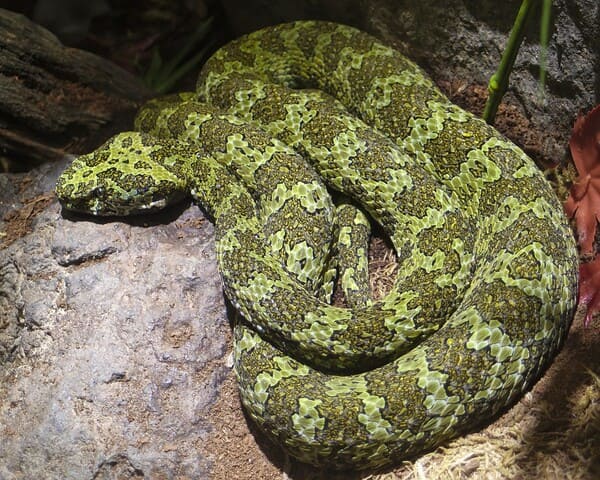
9. Mangshan soldering iron tip
The Mangshan branding iron head, also known as the Mangshan original spearhead pit viper, is a giant venomous snake unique to China. It is famous for its slightly larger triangular head and cheek pits, which look like a piece of iron, hence the name. Due to its endangered status, it is included in the Red List of the International Union for Conservation of Nature and is an "endangered" species. Some people have given it the reputation of "the panda among snakes".
The total length of the Mangshan iron-headed snake can reach 2 meters, and it is a venomous snake with tube teeth. Its body is covered with dark brown scales, mixed with tiny yellow-green or rust-colored spots, forming a fine network pattern. Compared with the five-step snake, the Mangshan iron-headed snake is more venomous. After being bitten, if no timely response measures are taken, it can be fatal in less than ten minutes.
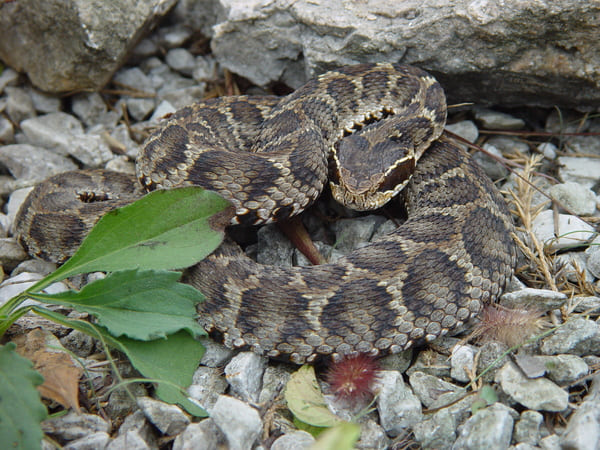
10. Short-tailed viper
The short-tailed adder is mainly distributed in the middle and lower reaches of the Yangtze River in China and the Korean Peninsula. It is also one of the most poisonous snakes in China. This viper is a diurnal snake and is most active in hot weather, especially from 8 pm to early morning the next day. Short-tailed vipers often inhabit the grass in plains and hilly areas. From summer to early autumn, they will spread to cultivated areas, ditches, roadsides and around villages. They usually live in ready-made caves such as tree holes and mouse holes. Due to its wide distribution, large number and strong toxicity, the short-tailed adder has caused serious harm to densely populated areas in the middle and lower reaches of the Yangtze River.
Its venom contains presynaptic neurotoxins, which may cause death mainly through the action of neurotoxins. There are also reports that bites may cause symptoms such as myocardial damage and hemoglobinuria.
The ranking of the top ten venomous snakes in China is mainly based on the toxicity/popularity of venomous snakes, and comprehensively refers to relevant Internet rankings/lists for recommendations. If you have any questions, please feel free to comment/criticize at the end.
We created this article in conjunction with AI technology, then made sure it was fact-checked and edited by a Animals Top editor.